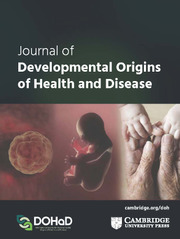 “In recent years, the role of the endocannabinoid system (ECS) in various cardiovascular conditions has been a subject of great interest. The ECS is composed of cannabinoid receptors, their endogenous ligands, also known as endocannabinoids, and enzymes responsible for the synthesis and degradation of endocannabinoids.
“In recent years, the role of the endocannabinoid system (ECS) in various cardiovascular conditions has been a subject of great interest. The ECS is composed of cannabinoid receptors, their endogenous ligands, also known as endocannabinoids, and enzymes responsible for the synthesis and degradation of endocannabinoids.
Several lines of evidence suggest that the ECS plays a complex role in cardiac and vascular systems; however, under normal physiological conditions the functions of the ECS are limited. Overactivation of components of the ECS has been associated with various cardiovascular conditions.
Intriguingly, activation of the ECS may also reflect a cardioprotective compensatory mechanism. With this knowledge, a range of naturally occurring and synthetic cannabinoid receptor agonists and antagonists, as well as inhibitors of endocannabinoid metabolic enzymes have emerged as promising approaches for the treatment or management of cardiovascular health.
This review will first focus on the known role of the ECS in regulating the cardiovascular system. Secondly, we discuss emerging data highlighting the therapeutic potential of naturally occurring non-psychoactive ECS modulators within the cardiovascular system, including phytocannabinoids, terpenes, and the endocannabinoid-like molecule palmitoylethanolamide.”
https://pubmed.ncbi.nlm.nih.gov/32677481/
“Several approaches discussed here, including administration of eCB-related molecules such as PEA, or supplementing with various phytocannabinoids can be promising candidates for the management of cardiovascular risk factors and CVD.”
https://www.tandfonline.com/doi/full/10.1080/19390211.2020.1790708


 “The study documented here was aimed to find the molecular interactions of some of the cannabinoid constituents of
“The study documented here was aimed to find the molecular interactions of some of the cannabinoid constituents of  “Increased levels of
“Increased levels of  “In vivo studies show that
“In vivo studies show that  “Cardiovascular complications are the major cause of mortality in diabetic patients. However, the molecular mechanisms underlying diabetes-associated arrhythmias are unclear.
“Cardiovascular complications are the major cause of mortality in diabetic patients. However, the molecular mechanisms underlying diabetes-associated arrhythmias are unclear. “Novel anticancer medicines, including targeted therapies and immune checkpoint inhibitors, have greatly improved the management of cancers. However, both conventional and new anticancer treatments induce cardiac adverse effects, which remain a critical issue in clinic.
“Novel anticancer medicines, including targeted therapies and immune checkpoint inhibitors, have greatly improved the management of cancers. However, both conventional and new anticancer treatments induce cardiac adverse effects, which remain a critical issue in clinic. “This study aims to determine the frequency of coronary artery disease among young to middle aged adults presenting with chest pain who currently use marijuana as compared to nonusers.
“This study aims to determine the frequency of coronary artery disease among young to middle aged adults presenting with chest pain who currently use marijuana as compared to nonusers. “Evidence suggests that activation of the endocannabinoid system offers cardioprotection.
“Evidence suggests that activation of the endocannabinoid system offers cardioprotection. “The endocannabinoid system (ECS), modulated by metabolites of linoleic acid (LA), is important in regulating cardiovascular function.
“The endocannabinoid system (ECS), modulated by metabolites of linoleic acid (LA), is important in regulating cardiovascular function.